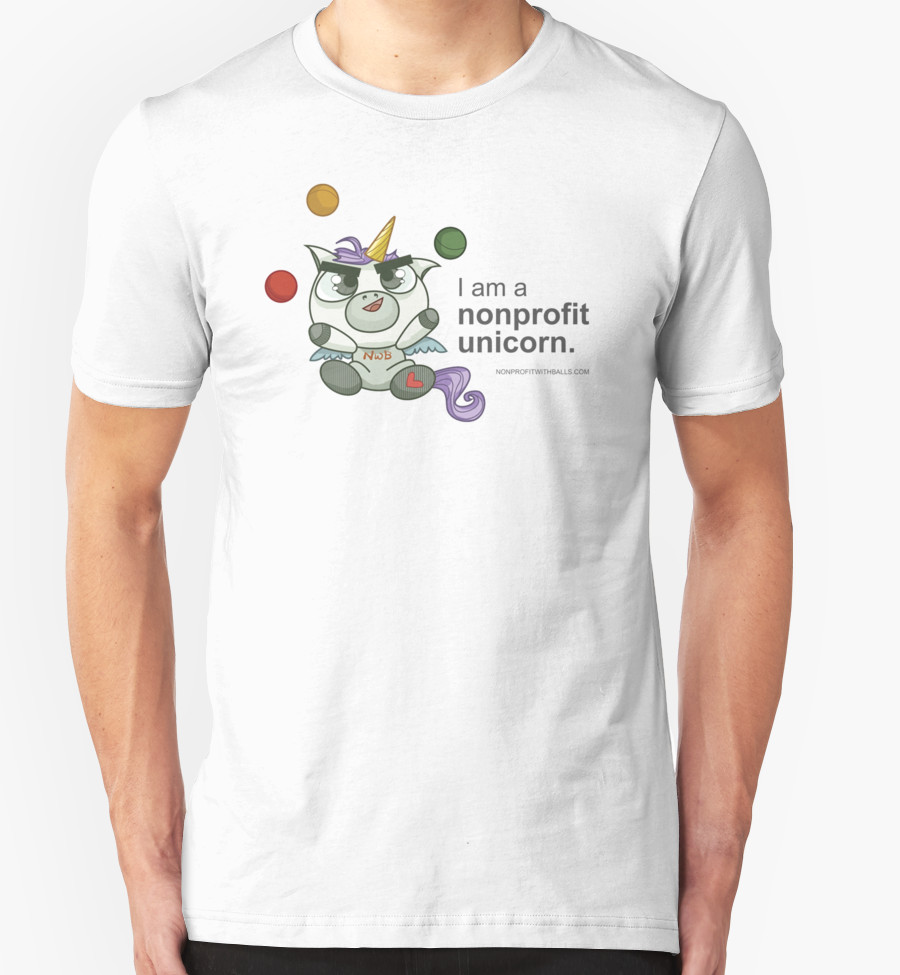
So I am happy to announce that Nonprofit With Balls is now Nonprofit AF. We are Nonprofit AF. What does AF stand for? Amplified and Focused? Awesome and on Fire? Amazing and Fluffy? Sure. Continue reading “Nonprofit With Balls is now…Nonprofit AF!”

So I am happy to announce that Nonprofit With Balls is now Nonprofit AF. We are Nonprofit AF. What does AF stand for? Amplified and Focused? Awesome and on Fire? Amazing and Fluffy? Sure. Continue reading “Nonprofit With Balls is now…Nonprofit AF!”
 Hi everyone, before we get into today’s topic, look, NWB merchandise is on sale!
Hi everyone, before we get into today’s topic, look, NWB merchandise is on sale!
All right, business pals, we need to have another talk. First of all, I love y’all. I just moved into a new house this week, and spent time at a hardware store trying to find these little thingies that hold up the shelves in my kitchen cabinets. They’re called “shelf pins,” and you can move them to different holes to lower or raise the shelves. Without some business somewhere making these little pins, my cabinet would not be able to fit my really tall bottles and it would just look awful. So yes, I am deeply appreciative for all the businesses out there doing all sorts of useful, interesting, and important stuff. I am glad you exist, and I am glad to pay money for the stuff you make and do.
But dude, the condescension needs to stop. Recently, I’ve noticed it has been in the form of explaining to us simple nonprofit bumpkins just how much better off we’d be if we just acted more like for-profit businesses. Sometimes it is conscious, most times it is not, but always it is irritating.
One time, I was showing a potential board member our Saturday morning program, which served 150 kids. It was his first visit, and he launched into a lecture about having a business plan. “We have a three-year strategic plan,” I said, and before I could elaborate, he interrupted to explain what a business plan was. He interrupted several times to explain various Important Business Concepts to me. Continue reading “Dear business people, please stop bizsplaining things to us nonprofit folks”
 Two weeks ago I had lunch with Luke, whom you may recall from “Being a Nonprofit with Balls.” Luke had come to VFA a couple of months ago asking us to rally 15 to 20 community members for a focus group. I had just woken up from my daily ED power nap and was kind of groggy and in no mood to be accommodating, so we got into a fistfight. Of course, this the nonprofit field in Seattle, so by “fistfight” I mean that we threw big concepts, hoping to wound each other with phrases like “authentic engagement” and “equity.” I told him that we small ethnic nonprofits are overwhelmed with similar requests from well-meaning organizations who are trying to be “inclusive” and that we just didn’t have staff capacity to do it and that he should go back to advocate for more equitable funding if he really wanted to authentically engage the communities of color.
Two weeks ago I had lunch with Luke, whom you may recall from “Being a Nonprofit with Balls.” Luke had come to VFA a couple of months ago asking us to rally 15 to 20 community members for a focus group. I had just woken up from my daily ED power nap and was kind of groggy and in no mood to be accommodating, so we got into a fistfight. Of course, this the nonprofit field in Seattle, so by “fistfight” I mean that we threw big concepts, hoping to wound each other with phrases like “authentic engagement” and “equity.” I told him that we small ethnic nonprofits are overwhelmed with similar requests from well-meaning organizations who are trying to be “inclusive” and that we just didn’t have staff capacity to do it and that he should go back to advocate for more equitable funding if he really wanted to authentically engage the communities of color.
We decided to have lunch, and I was looking forward to it. While I thought Luke’s approach was ineffective, I appreciated his refreshing directness. He arrived on time at my favorite restaurant. Since he was technically my elder, I poured him tea.
“So, how did you get to where you are?” I asked. He told me of his journey and of his philosophy on life, which is basically that if you serve others selflessly, the Universe will reward you.
“I moved up here, didn’t have a job. I was at this event, and I met Ted, who is a millionaire. He told me about this thing he’s trying to do to improve education, so I said that sounds great, how can I help? And he gave me a job.”
“That’s great,” I said, wishing that I knew more millionaires so I could be selfless around them.
“Listen,” he said, “that thing with asking you to put together a focus group, that was garbage.”
“It’s OK,” I said, “we get asked all the time. We know people mean well.”
“It’s just, how do we get the communities to the table? We keep inviting them.”
For the past several months, I’ve been on this bent about community engagement and funding equity, especially around education. After talking to Luke, I realize that he’s a nice guy, but his approach is very indicative of the standard approach to community engagement, which has gone nowhere. People wonder, Why are the communities of color refusing to join our table? We’ve invited them countless times. Don’t they want to work with us? We’ve prepared place settings for them and everything!
The reality is that whoever hosts the table has the majority of the power. They can shift people’s seats around, kick them out, refuse to share the recipe for coconut cornbread, or whatever. It is challenging to have authentic engagement when people feel like guests at a table and not a co-host. “Inviting” people to the table is not enough, since this is symptomatic of not engaging people at square one, when the table was being created in the first place.
“Community engagement must begin at square one,” I said. “Too often efforts get to square three or four, usually well-supported by funding at each step of the way, before people stop to realize, ‘Hold on, we’re not doing a good job reaching underrepresented communities.’ They scramble and backtrack, but it may be too late, since funding usually has been allocated without these communities in mind. So then we get asked to participate without being provided resources.”
“Another thing,” I said, “the people most impacted need to lead the effort. This is especially true with an issue like education, where the ‘achievement gap’ is basically kids of color. If this is the civil rights issue of our time, then the people most impacted need to be in the front leading. Allies and supporters are critically important. This work cannot be successful without then, especially since they have the relationships with funders. But they must be on the side or behind supporting the people most affected by inequity. Too often we see well-meaning people coming into the neighborhood saying ‘Hey, we know what works best for you. Come join and support our efforts!’”
“Also, people think that presence equals engagement. I’ve been to numerous ‘community input’ events that are fully attended by diverse communities. VFA has rallied our community members to these events. They have interpreters and UN-style headsets, and the room looks beautiful and inspiring, and no doubt pictures of the event will be posted everywhere afterward as proof of how effective the outreach and engagement was. Many of our community members leave going ‘Huh?’ Then they don’t see any results and feel that their time was wasted, and VFA loses credibility with them for inviting them. They may not understand all the concepts presented, but they know enough to feel shafted and tokenized. Presence is only one-half of engagement.”
“Here, try this vegan lemongrass chicken,’” I said, taking a break from my lecture, which I realized had been welling up for the past few years. “Having names on a list does not indicate engagement,” I continued, “VFA and other ethnic nonprofits get asked to join various coalitions and efforts. Because we are so busy doing direct service, we sometimes say ‘Yeah, go ahead, sign us up and use our name. We’ll drop by occasionally.’ This is a horribly destructive practice, as it stymies responsibility on our part to actively lead in the effort, and it reinforces the system of funding inequity and poor engagement. Funders looking at this list of ‘members’ may not be aware of how actively engaged they actually are. Heck, some organizations on the list may no longer even exist.”
“Finally,” I said, “direct service organizations have tremendous potential for advocacy. After all, they work directly with families and know their needs and can mobilize them to change policies and practices. But we are not funded to do that stuff.”
This was a lot of information to take in. We paused for a while to eat our food. “So what can I do to help?” he asked. I thought about it for a second. For the past year and a half I’ve been involved with the Southeast Seattle Education Coalition (SESEC), which is mobilizing the communities of color and allies to work together to improve education in Southeast Seattle. This is one of the few efforts actually led by the local communities of color to address the achievement gap. We are tired of being “invited” to the table. We must be a table. Trouble is, communities of color are not as connected to funders and decision makers, so we’ve been struggling with funding.
“Introduce me to your millionaire friend Ted,” I said, “I want to talk to him about SESEC.”
“I’ll see what I can do,” he said. We continued our conversation until the bill came. “I’ll pay,” I said, but Luke insisted on getting it. I could have fought for the bill, or at least to pay for my share, but I knew he felt some guilt, and this was his way of appeasing. I let him pay. I guess it’s my way of being selfless.
Last week, Luke emailed me saying he had talked to Ted and that Ted was willing to meet with me. I followed up to schedule a meeting. I am going to meet with a millionaire. Will keep you updated. [Read Part 3]